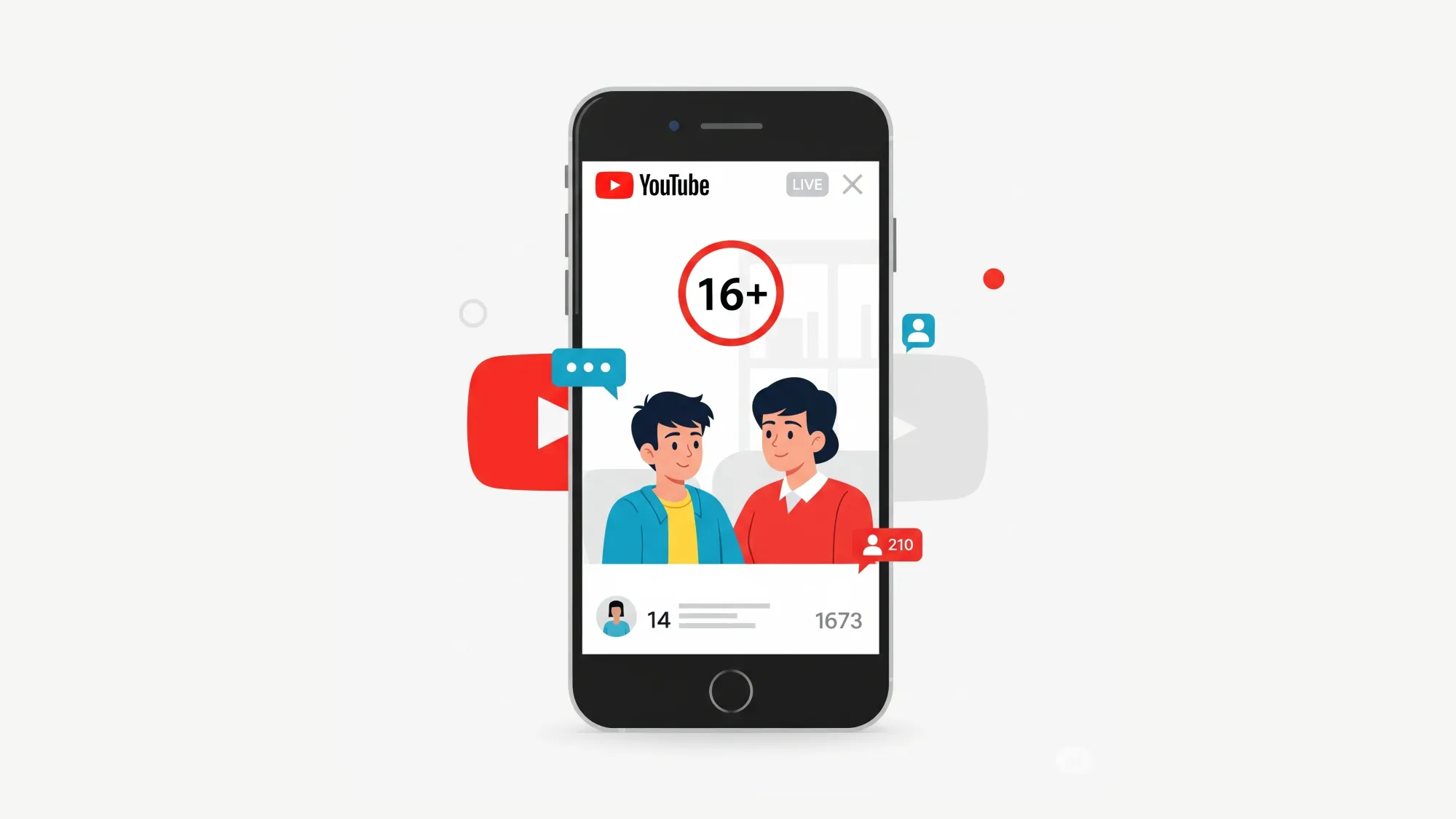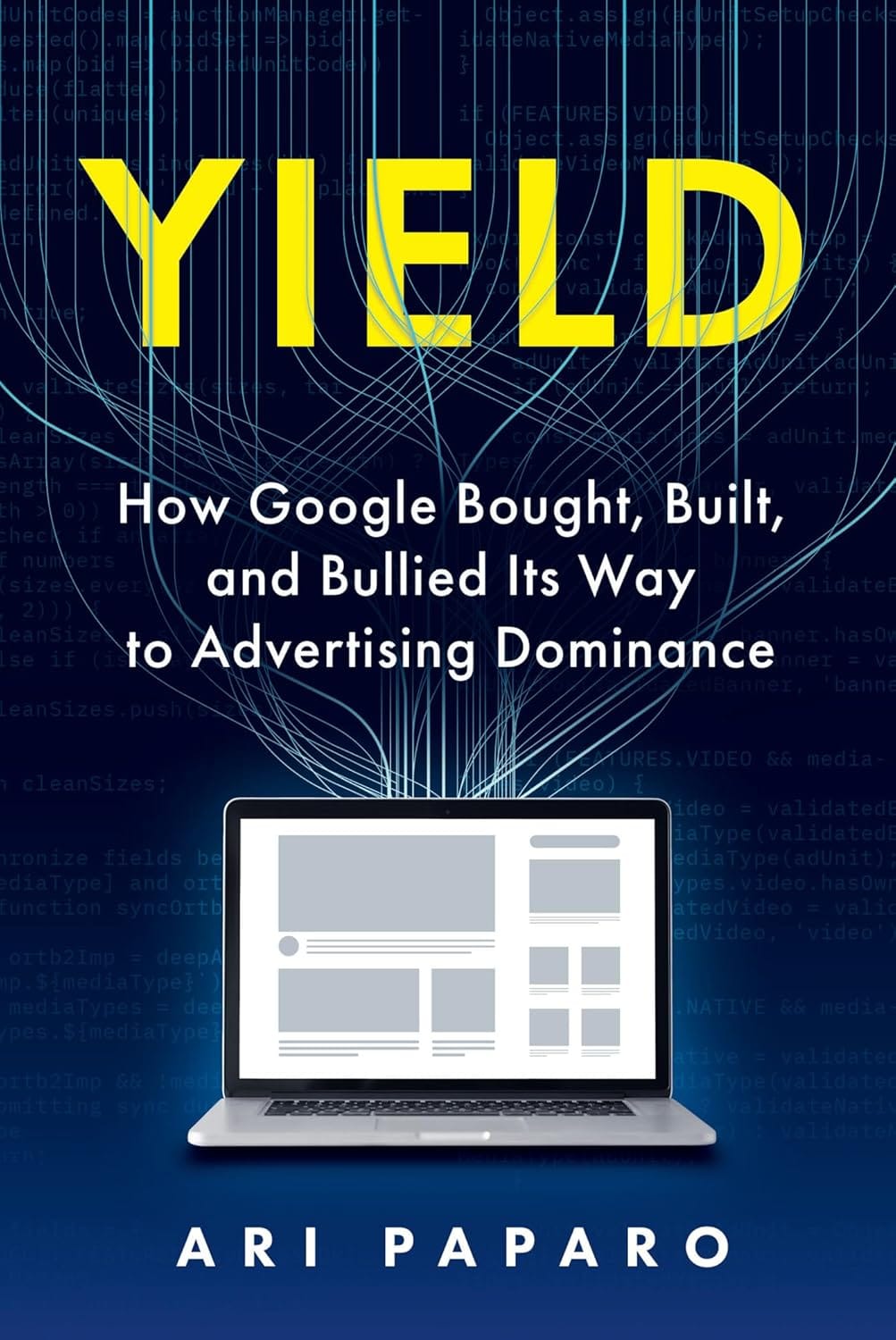YouTube raises minimum live streaming age to 16 years starting July 22
New policy requires teenagers under 16 to have visible adult supervision during broadcasts while introducing enforcement measures.

YouTube announced on June 26, 2025, that it will increase the minimum age requirement for live streaming to 16 years old, effective July 22, 2025. The policy change represents a significant tightening of the platform's safety measures for younger users.
According to an updated support page, creators will need to be at least 16 years old to initiate live streams independently on the platform. An archived version of the webpage previously listed 13 as the minimum age for live streaming without breaking terms of service.
Get the PPC Land newsletter ✉️ for more like this.
Summary
Who: YouTube creators and users, particularly those between 13-17 years old, along with marketing professionals utilizing the platform for campaigns involving younger demographics.
What: YouTube is increasing the minimum age for independent live streaming from 13 to 16 years old, while allowing supervised participation for 13-15 year olds with visible adult accompaniment.
When: The policy takes effect July 22, 2025, with immediate chat restrictions and future enforcement measures including stream removal and temporary live streaming suspensions.
Where: The changes apply globally across all YouTube markets and affect live streaming functionality specifically, not other platform features.
Why: The restrictions aim to enhance safety protections for younger users on the platform, reflecting broader industry trends toward stricter minor protection policies and responding to regulatory pressure regarding child safety online.
Get the PPC Land newsletter ✉️ for more like this.
The platform will continue allowing users between 13 and 15 years old to appear in live streams, but they must be "visibly accompanied" by an adult at all times. This represents an expansion of existing rules that previously applied only to users younger than 13.
Enforcement timeline introduces graduated penalties
YouTube has established a graduated enforcement timeline for the new restrictions. After July 22, live streams featuring children between 13 and 15 years old without adult supervision will immediately lose access to live chat functionality, both on their stream and on the affected account.
More severe penalties will follow at an unspecified future date. According to the support documentation, YouTube plans to remove non-compliant live streams entirely and may temporarily disable live streaming capabilities for accounts that repeatedly violate the policy. The company describes this enforcement as happening "in the future" rather than immediately on July 22.
The phased approach suggests YouTube anticipates a significant adjustment period for affected creators and their audiences. The grace period allows time for compliance education while establishing clear consequences for violations.
Technical requirements expand for minor participation
The updated policy includes detailed requirements for teenagers who wish to participate in live streams on accounts owned by adults. Adult account holders can grant access to younger users as editors, managers, or owners, allowing minors to reach their existing audiences while maintaining compliance.
However, technical limitations currently restrict this functionality. Channel delegates can only initiate live streams through YouTube Live Control Room, not through mobile or other streaming interfaces. The adult must remain visibly present and actively engage in the live stream rather than merely supervising from off-camera.
YouTube has emphasized that adult participation must be genuine co-creation rather than passive oversight. The platform requires that adults "engage in the live stream as much as you do so we know you are co-creating with them."
Safety recommendations target remaining young streamers
Along with the age restriction changes, YouTube introduced comprehensive safety guidelines specifically targeting 16 and 17-year-old creators who can continue streaming independently. These recommendations were not included in previous versions of the support documentation.
The platform advises young creators to keep personal information private, including full names, ages, addresses, schools, and phone numbers. Streamers should also be cautious about revealing location details through background elements like house numbers or street signs.
Privacy settings receive particular emphasis in the new guidelines. YouTube encourages young creators to work with parents or trusted adults to configure content privacy and embed settings properly. The platform also recommends having adults nearby during streams or ensuring they know about streaming activities.
Moderation tools feature prominently in the safety recommendations. YouTube suggests designating trusted adults as moderators to help filter inappropriate chat messages. The platform emphasizes that creators should immediately stop streaming and contact adults if uncomfortable situations arise.

Yield: How Google Bought, Built, and Bullied Its Way to Advertising Dominance
A deeply researched insider’s account of Google’s epic two-decade campaign to dominate online advertising by any means necessary.
Marketing implications affect campaign strategies
The age restriction changes carry significant implications for marketing professionals utilizing YouTube's platform. The restrictions affect a substantial demographic that brands often target through influencer partnerships and user-generated content campaigns.
Content creators working with brands must now evaluate their partnerships and production workflows to ensure compliance with the new age standards. This particularly impacts campaigns that rely on younger creators who may no longer qualify for independent live streaming.
Google's broader advertising policies for minors have similarly tightened over the past year, indicating a coordinated approach to child safety across the company's platforms. These changes consolidate various minor protection policies into comprehensive frameworks affecting multiple advertising products.
The timing coincides with broader platform safety initiatives across the digital advertising ecosystem. Meta recently introduced new verification requirements for certain advertiser categories, while YouTube has expanded AI content disclosure requirements that affect how brands can utilize synthetic content in campaigns.
Platform maintains existing safety infrastructure
YouTube continues offering existing safety tools including Family Center, which provides parents with oversight capabilities for their children's platform activities. The company positions the age restriction changes as complementary to rather than replacement for existing safety measures.
The platform's broader safety ecosystem includes content policies, reporting mechanisms, and automated detection systems that operate independently of age restrictions. These systems continue functioning as before while the new age requirements add an additional layer of protection specifically for live streaming.
Community Guidelines enforcement remains separate from age restriction violations. Creators can still face penalties for content policy violations regardless of their compliance with age requirements.
Industry context reflects regulatory pressure
YouTube's decision reflects increasing regulatory scrutiny of social media platforms' minor safety measures. The announcement follows similar platform updates across the industry as companies respond to legislative pressure and public concern about child safety online.
The changes align with broader trends in digital platform regulation. Various jurisdictions have implemented or proposed legislation requiring enhanced minor protections, including age verification systems and content restrictions.
The broader digital advertising landscape continues adapting to privacy regulations and safety requirements. Connected TV advertising has grown significantly as marketers seek alternatives to traditional social media platforms, with CTV budgets projected to double from 14% to 28% by 2025.
Platform dependency concerns have emerged as companies implement stricter content policies. Marketing teams must develop diversified channel strategies to reduce reliance on individual platforms while maintaining reach and engagement objectives.
Technical implementation challenges expected
The policy changes present technical challenges for both creators and the platform. YouTube must develop systems to verify adult supervision requirements while maintaining streaming quality and user experience.
Age verification systems present ongoing technical and privacy challenges across digital platforms. YouTube has not detailed specific verification mechanisms for the new age requirements, suggesting the company may rely on existing account verification processes.
Content moderation at scale poses significant challenges for live streaming platforms. YouTube processes hundreds of hours of live content daily, making manual review of adult supervision requirements technically difficult.
Future enforcement details remain undefined
YouTube has not specified exact timelines for implementing stricter enforcement measures beyond the initial chat restrictions. The company describes future penalties as happening "in the future" without providing specific dates or criteria.
Appeals processes for age restriction violations have not been detailed in the updated documentation. Creators affected by the changes may need to wait for additional policy clarifications before understanding their options.
The platform indicated that policy details may evolve based on implementation results and community feedback. This suggests potential modifications to requirements or enforcement approaches following the July 22 launch.
Global implementation across all markets
The age restriction changes apply globally across all YouTube markets rather than targeting specific regions. This uniform approach contrasts with some platform policies that vary by jurisdiction based on local regulations.
International regulatory compliance may require additional policy adjustments as different countries implement varying minor protection requirements. YouTube's global approach provides consistency but may not satisfy specific regional regulatory demands.
The policy changes affect creators regardless of their subscriber count or monetization status. Both amateur and professional creators must comply with identical age and supervision requirements.
Timeline
- January 26, 2025: Google consolidates advertising policies for minor protection across its platforms, merging five distinct policies into comprehensive framework
- May 22, 2025: Google Marketing Live 2025 introduces AI advertising features including enhanced measurement capabilities and privacy-focused iOS solutions
- May 25, 2025: YouTube introduces mandatory AI content disclosure requirements for creators using synthetic content
- June 12, 2025: YouTube launches follow-on views optimization for Demand Gen campaigns targeting sustained audience engagement
- June 26, 2025: YouTube announces live streaming age restrictions increase to 16 years minimum
- July 22, 2025: New age restrictions take effect, chat restrictions begin for non-compliant streams


